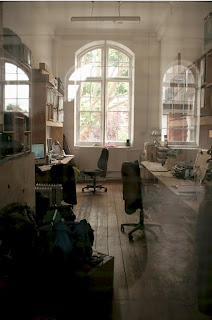A Foundation Liverpool
The Blade Factory
Greenland Street
Liverpool
Merseyside
www.saatchi-gallery.co.uk/acurriculum
The deadline for applications is 4th January 2010.
lauram@afoundation.org.uk
WHO IS ELIGIBLE? Artists of all ages who have completed a BA or MA Fine Art course within the last five years may apply. Open to all EU residents.
ABOUT
A Curriculum will provide eight artists with studio space and stipend for two months, with four full accommodation places. Four artists will be selected who live within traveling distance of Liverpool.
The studios will be in an open plan space in A Foundation Liverpool's 'Blade Factory'. In addition to the studio time, artists will take part in an intensive programme of discussions with art professionals, who will then carry out one-on-one studio sessions. The A Curriculum programme also includes one artists' dinner, a studio open day and a public closing event.

The A Curriculum Selectors are:
Jaime Gili, an artist based in London and represented by Riflemaker. His recent exhibitions include, COMMA04 at BloombergSPACE, London, and Coalesce Happenstance, Smart, Amsterdam
Axel Lapp, Director of Axel Lapp Projects, Berlin, Art Review's contributing editor for Berlin, Editor at art publishers The Green Box
Kate MacGarry, Director of Kate MacGarry Gallery in Vyner Street, London
Juan Cruz, Head of the Art Department at the Liverpool School of Art and Design, Liverpool John Moores University, represented by Matt's Gallery, London and Galeria Elba Benitez, Madrid
Mark Waugh, Executive Director of A Foundation
A Curriculum is supported by Saatchi Online and John Moores University.

















































